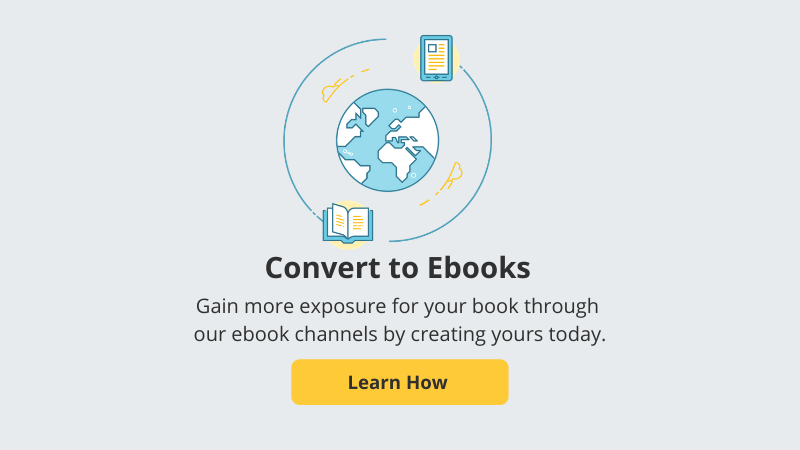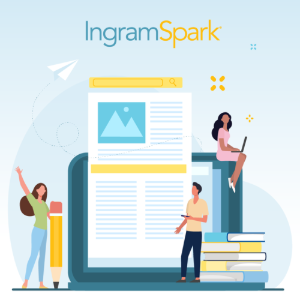When it comes to self–publishing a virtual title, one of the key questions that most authors come across is "how do I price my ebook?" While there's no one right answer to this task, there are a few wrong ones to keep in mind. As silly as it sounds, the goal is to price your ebook like an ebook. What does that mean? Well, for example, $99.99 is probably way more (unless you’re selling a college–textbook) than any potential customer would be willing to pay for an ebook. On the other hand, a virtual price tag of $14.99 can suddenly widen your customer base and potential sales. Long story short, the best way to succeed with your ebook pricing strategy is to think like a reader.
Sounds simple enough, and it can be, but there are a few guidelines you can use to help identify a close to perfect price–point strategy for your ebook.
Guidelines for Ebook Pricing
- Find Your Genre and Fit in
- Experiment with Different Prices
- Consider How Different Markets Affect Price
Consumers buy products that demonstrate a potential value–add to their life. Your ebook needs to be priced in a way that reflects the value it could potentially bring a reader. Generally, we think of added value in three categories: entertainment value, educational value, and market value—which brings us to our first guideline:
GUIDELINE 1: Find Your Genre and Fit in!
For every ebook title you have, you’re going to have to do a little research. First, identify your genre (sci–fi, romance, self–help, etc.). Each genre has different reasons for pricing the way they do. For example, a well–known self–help guru might be able to charge $19.99 for their ebook. That's because the crowd of readers they attract would know and understand the value that the book would contain, making it a sound investment for their mental or emotional well–being. But a lesser–known self–help author may not have the reputation that readers searching for much-needed help/advice would be as willing to spend money on. What this author can offer, however, is a lower price, incentivizing customers who may be interested in purchasing self–help around your book's particular topic without feeling like they're gambling away their money on someone with whom they're unfamiliar. On that same note, too low of a price could indicate to a reader that the ebook doesn’t have much value at all.
Many genres have a pricing sweet spot.
When it comes to pricing, there is no one size fits all model—which can work to your advantage! Finding the sweet spot in your genre's pricing can give you leverage in the battle for a reader's attention.
You might be able to price under the most popular ebooks in your ebook's category (and win customers!), but above the prices that make readers discredit your content.
GUIDELINE 2: Experimenting is a good strategy!
Once you’ve identified a range of price points that fit your content and genre, you may find that you aren’t selling as many copies as you want or that you aren’t making as much per copy sold as you’d like. Changing your price, whether up or down, might be a solution to these problems.
While you don’t want to change your price too often (which can look erratic to retailers and customers) changing your pricing every few months can be a good strategy.
How? Well, the first few months after you release a new romance novel, you might price it at $9.99—at this price, you can get the most compensation per copy sold as possible while the buzz around your ebook is at its highest! But after a few months, your title may have lost that new car smell, and lowering your price could reopen interest from new readers.
Willingness to buy operates on a continuum like this:

GUIDELINE 3: Go wide!
Naturally, you'll want to flood your ebook into every available market to attract the most customers. Through IngramSpark, our authors can distribute their virtual titles to ebook retailers worldwide, which opens opportunities for their sale potential.
Let's break down why that is. Ebook readers, just like those who prefer hardcopy, tend to search and shop for content in more than one place. When it comes to selling books, no one source, no matter how big, has a complete monopoly over the book–buying industry. For instance, those who prefer a physical copy may shop at Target, while others may exclusively go to Barnes & Noble. The same applies to ebook readers. Some may go to Amazon, while others search on Bookmate, Youscribe, and many other virtual stores that you may not be aware of—yet.
As an IngramSpark author with an ebook, dozens of online channels and models will house and distribute your title to its customers: Bookmate, RedShelf, ebooks.com, Amazon, and Apple—to name a few.
So now you may be thinking, "fantastic, but what does this have to do with pricing?"
When setting your ebooks price, make sure to consider how that price may need to change for different markets. One instance of this would be library ebook options. Due to the lending model that libraries have, it's always in the author's best interest to price their ebook 2.5 times higher than when selling through ebook retail stores.
IngramSpark publishers have a special column on their ebook pricing page specifically for library pricing. Make sure to go to your account's ebook info section and add library pricing to your title. This allows you to create a separate library price for library retailers.
Pricing your ebook is something that takes time to get right. You may have to adjust to find your sweet spot. Remember to price according to customer expectations, focus on standards for your category and genre, and create pricing for as many places as possible to maximize your sales potential!














